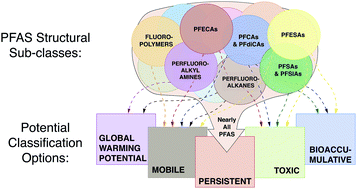The high persistence of PFAS is sufficient for their management as a chemical class
Abstract
Per- and polyfluoroalkyl substances (PFAS) are a class of synthetic organic substances with diverse structures, properties, uses, bioaccumulation potentials and toxicities. Despite this high diversity, all PFAS are alike in that they contain perfluoroalkyl moieties that are extremely resistant to environmental and metabolic degradation. The vast majority of PFAS are therefore either non-degradable or transform ultimately into stable terminal transformation products (which are still PFAS). Under the European chemicals regulation this classifies PFAS as very persistent substances (vP). We argue that this high persistence is sufficient concern for their management as a chemical class, and for all “non-essential” uses of PFAS to be phased out. The continual release of highly persistent PFAS will result in increasing concentrations and increasing probabilities of the occurrence of known and unknown effects. Once adverse effects are identified, the exposure and associated effects will not be easily reversible. Reversing PFAS contamination will be technically challenging, energy intensive, and costly for society, as is evident in the efforts to remove PFAS from contaminated land and drinking water sources.

- This article is part of the themed collections: Recent Open Access Articles and Best Papers 2020 – Environmental Science: Processes & Impacts


 Please wait while we load your content...
Please wait while we load your content...